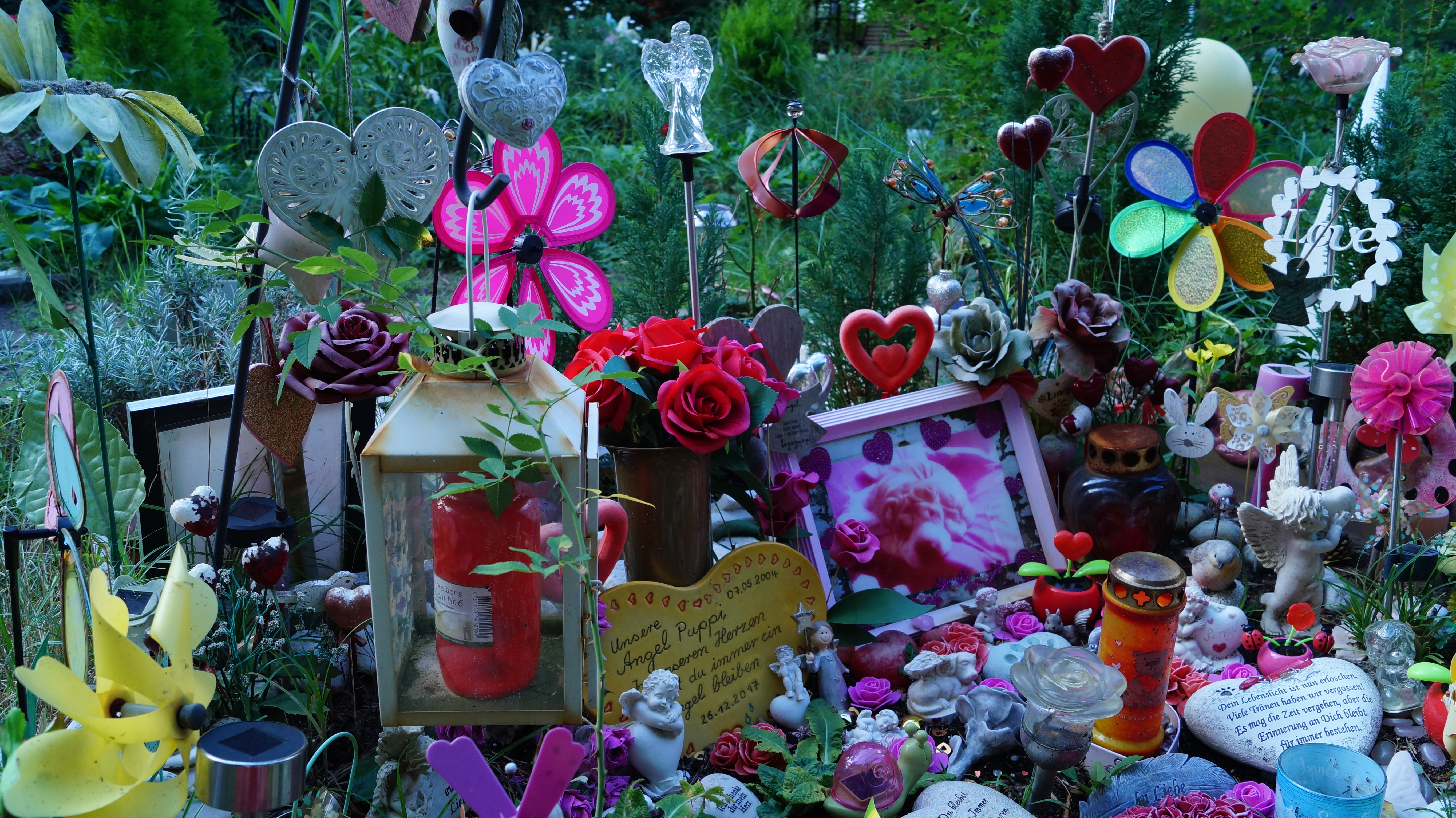Decorated grave of a pet at the animal cemetery. (Image: Eileen Klingner.)
An audio piece from the project seminar “Animal Topographies“ held at the Institute for Cultural Studies at Humboldt-Universität zu Berlin and run by Britta Lange and Mareike Vennen (summer semester 2021).
Animal topographies are site-specific explorations that view places where animals have played a special role in the past or present: spaces where animals have spent time, places to which they have been brought, and places that they have occupied. The audio stories that can be heard here start with theoretical and historical examinations of urban animal topographies and different forms of movement by looking at historical traces and current routes. The auditive hunt for clues leads through Berlin sites both known and unknown, where it explores relationships between humans and animals.
What happens to pets from thousands of Berlin households after their deaths? Eileen Klingner traces some of the routes they take – to the animal knackery, where their bodies are reused, or to the animal cemetery, where they are buried, mourned, and remembered. Her topographic wanderings highlight these animals’ various journeys and diverse transformations, and explore the spaces that dead animals occupy in the city.1
Other audio pieces tell the stories of  Where the Rats Live,
Where the Rats Live,  Cat Colonies,
Cat Colonies,  Berlin’s Border Dogs, and
Berlin’s Border Dogs, and  Haunting Cattle.
Haunting Cattle.
- You are listening to an interview with Richard Mitschke, animal undertaker (Bäroliner Haustierbestattungen) and founder of the Bärliner Tierfriedhofs (Bearlin Animal Cemetery) in Berlin Steglitz; an interview with Beate Kaminski, Senior Press Officer of the Berlin Falkenberg Animal Shelter (Berlin Animal Shelter); excerpts from EU regulation no. 1069/2009, laying down health rules as regards animal by-products and derived products not intended for human consumption and repealing Regulation (EC) No 1774/2002, read by Judith Rauwald; excerpts from the German Animal By-Product Disposal Act (TierNebG), read by Judith Rauwald; excerpts from the Regulation for the Implementation of the Animal By-Product Disposal Act (TierNebV), read by Judith Rauwald; an anonymous interview with a dog owner.↩
